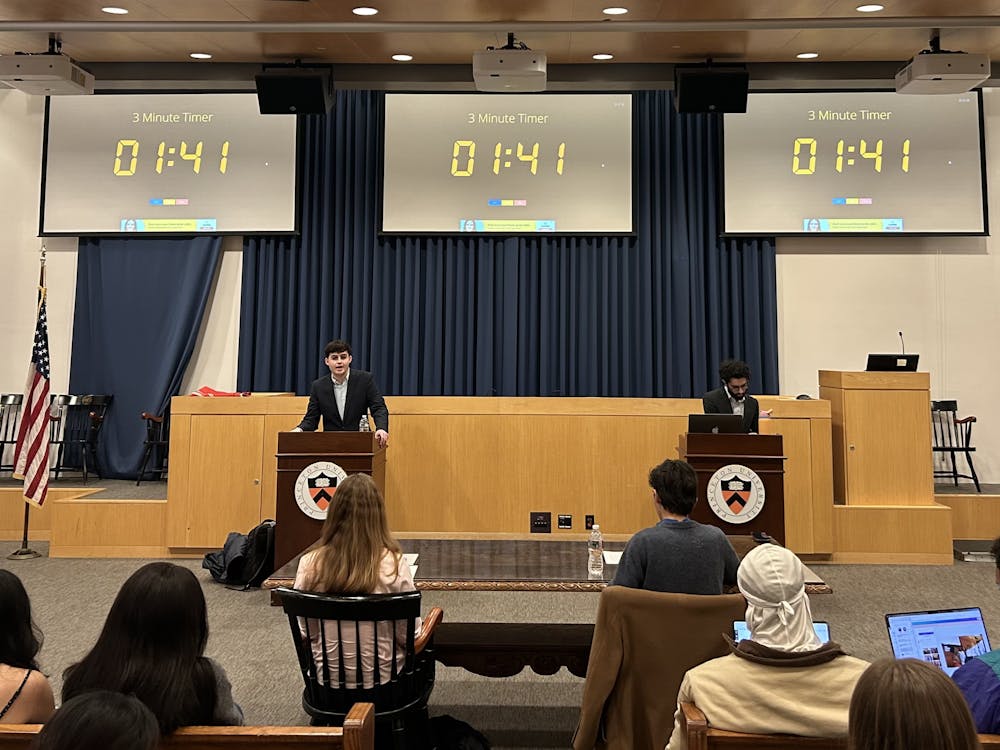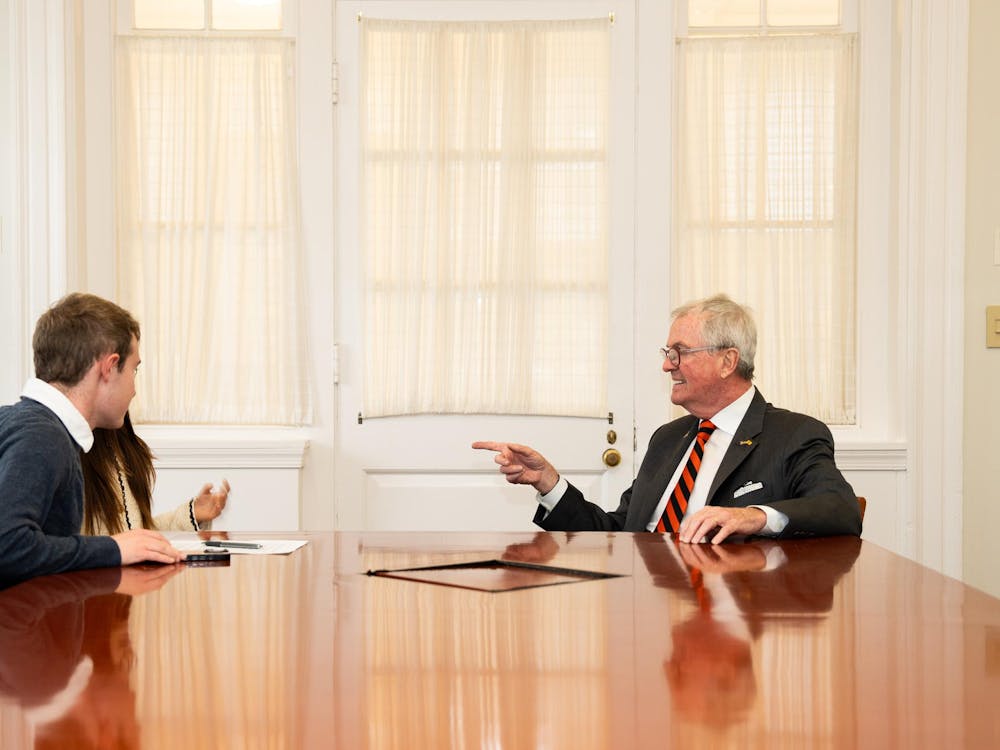Property owners and their neighbors on eastern Nassau Street in the Borough are looking to amend the area’s land-use ordinances in hopes of converting a formerly automobile-oriented area to a lively pedestrian-oriented neighborhood. At Tuesday’s meeting, the Borough Council heard a presentation on a proposed ordinance that would amend the zoning in this area to attract the desired development.
Attorney Martin Schneiderman and David Kinsey GS ’75, a visiting lecturer at the Wilson School, presented a proposal to convert the area by creating a public commons space, altering the uses allowed in the zone and creating architecturally differentiated buildings with enlivening businesses.
The proposed ordinance pertains to properties on the south side of eastern Nassau Street between Olden Street and the Sunoco gas station at Murray Place, once known as “Gasoline Alley” for its several filling stations.
Its goal is to redesign the tract as a whole to help the property owners in the neighborhood, the Bratman and Carnevale families, find new tenants to rent the space and to meet the needs of local residents who have expressed a desire to see something new in the area.
The ordinance was based on the results of a poll taken by Princeton Future, a private organization seeking proactive solutions to the challenges facing the Princeton community, that aimed to learn what local residents would like to see in the district.
The poll found that 70 percent of respondents supported or strongly supported a mixed-specialties food market like that in the Philadelphia Reading Terminal, while 83 percent said they strongly opposed placing fast food restaurants in the area.
The ordinance would amend the area’s zoning to prohibit fast food restaurants, defined as establishments selling prepared food not made to order, using fast service techniques designed for rapid customer turnover and requiring more parking than normal dining areas. It would permit kiosks, defined as freestanding structures not exceeding 500 square feet.
In the interest of finding tenants for the properties and encouraging the development of a thriving business district, the ordinance would permit office uses on its upper floors, which are currently not permitted.
The ordinance would also use an additional land incentive system, using a floor-ratio bonus to encourage the developers to provide open space for the public commons. Each retailer would receive a bonus of three square feet of additional area in exchange for every square foot the retailer provides as public space.
Borough Councilman Kevin Wilkes ’83, who is also an architect and builder, said he was “not quite certain [the ordinance] is fully baked.” He said that he felt that the standards were not exacting enough about how the developers were to solicit input from neighboring businesses and about how the public commons area would be designed to capture sunlight.
Linda Fahmie, project manager for the development of the Carnevales’ property, said she has had trouble renting the space because of the limits on the area’s development. She initially looked for a grocer to replace a previous grocer tenant but found that the location did not have enough parking or space to attract a new grocer.
She has since found another tenant willing to inhabit the space temporarily, she said, but was not able to lease it to them because she must first apply for permits to make the improvements necessary for the tenant.

“We need to get this property up and running and get income on it,” Fahmie said. She said that changing the area to a “neighborhood business” zone would allow her to make the property changes she needed now without having to go through arduous litigation.







